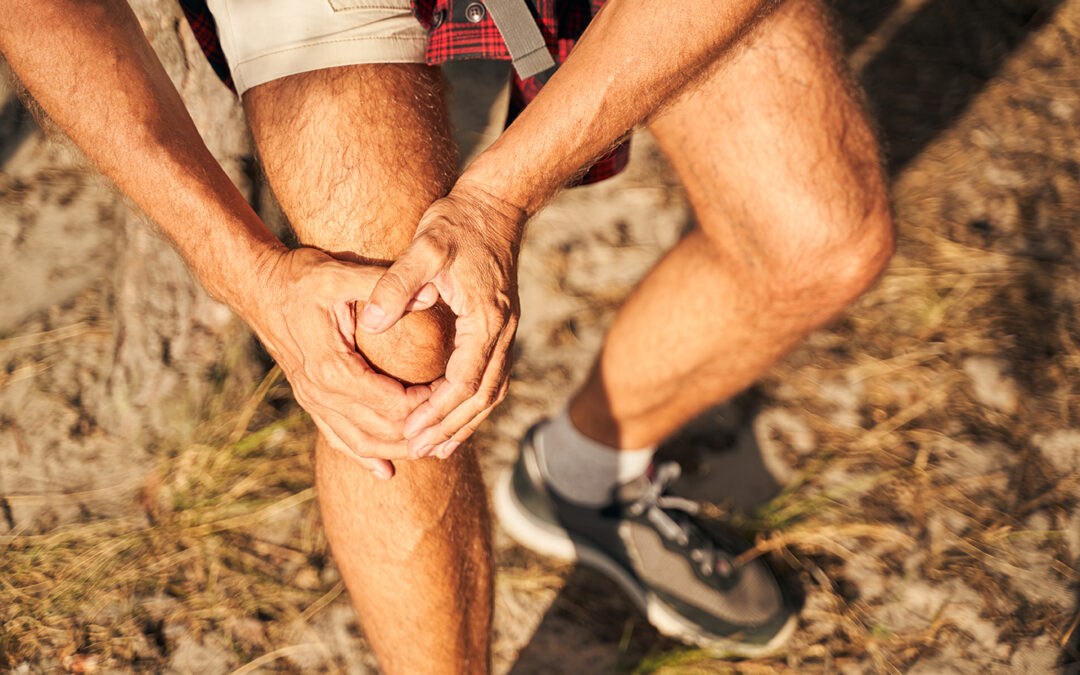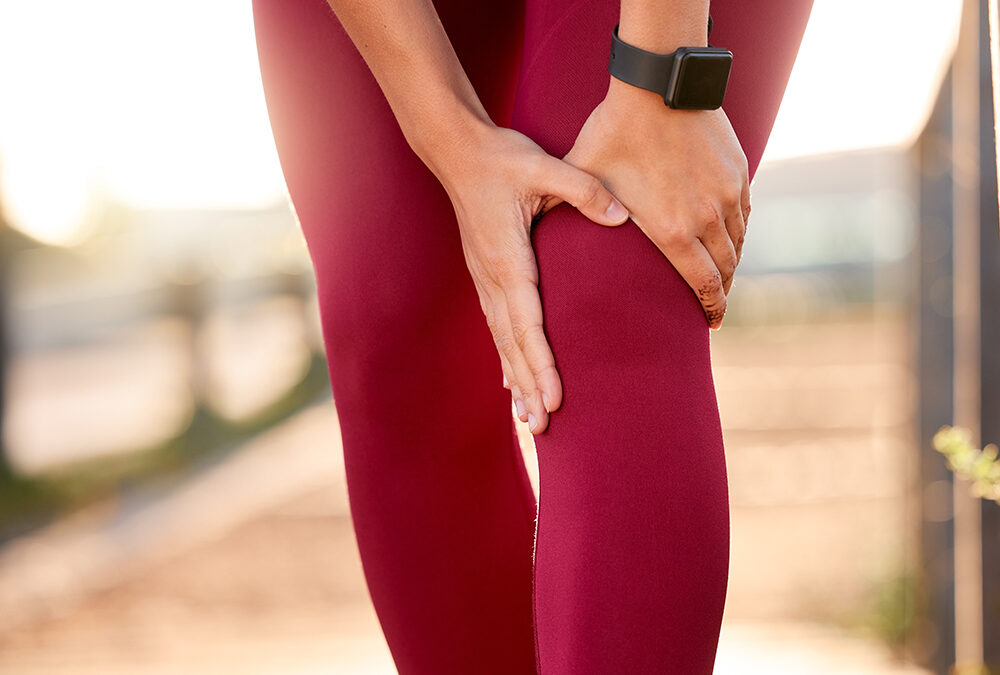Contents
Many movements that you do throughout the day require help from your knees, from sitting down in your desk chair at work to climbing the stairs in your home. In fact, your knees are the biggest joints in your body. They are meant to carry approximately one and a half times your body weight. That’s why it’s important that you do everything you can to keep your knees in the best shape possible.
When someone says they have “bad knees,” they often mean that they have chronic knee pain, or they may have sustained an injury a while ago that left permanent damage. It could also mean that they have weak knees, which likely refers to having instability or a lack of muscle strength surrounding the knee joints.
You don’t need to just accept having bad or weak knees for the rest of your life. That’s why leg exercises are often recommended by health care professionals when treating patients who have persistent knee issues.
We’ll talk about the benefits that you can gain from performing leg exercises to help your bad or weak knees. We’ll also discuss the leg exercises that you should avoid, as well as how Lattimore Physical Therapy can help.
6 benefits you can gain from leg exercises if you have bad or weak knees
Anyone can have bad or weak knees that cause pain and reduced mobility if they have a medical condition or have sustained a knee injury. It’s possible for you to have gradual wear and tear if you live an active lifestyle or play sports. It’s especially common for knees to weaken with age, with approximately 25% of people over the age of 55 experiencing knee pain each year.
Even though we all know that exercise is good for both physical and mental health, it’s important to note the significant impact that it can have on people with knee problems.
Here are six reasons why performing leg exercises is good for weak knees:
- Reduces risk of falling — Your knees play a vital role in your balance and coordination. By performing leg exercises, you can improve these key components of physical fitness to reduce the risk of falling and sustaining an injury. This becomes a more urgent need as you age. It can take longer to heal from a fall as your bone density decreases with time.
- Alleviates pain — Bad or weak knees often come with pain that occurs during movement or extensive periods of rest due to an injury or medical condition. Exercises that strengthen the muscles surrounding your knee joints, such as chair squats and single-leg step-ups, can help to reduce your pain. They can decrease the stress placed on the joints from surrounding soft tissue.
- Decreases stiffness — If you have bad knees, it can be tempting to reduce movement as much as possible to avoid potential pain. However, not moving your knees enough can lead to joint stiffness, causing even further discomfort and mobility issues. With leg exercises, especially stretches, you’re able to keep your blood circulating and loosen up tight tissue that’s contributing to your pain.
- Improves range of motion — Branching off the previous point, leg exercises that decrease stiffness will also lead to boosting your knees’ range of motion, which is often impacted by painful conditions or injuries. By improving the joint’s range of motion, you’ll be more able to comfortably carry out more movement patterns. Leg exercises that can help with this goal include straight-leg raises and clamshells.
- Increases shock absorption — If you have bad or weak knees, then you’ve probably had issues for quite some time. That’s because the constant stress placed on your knees makes it difficult for them to improve. Every step you take can have an impact on your joints, leading to more pain. The right leg exercises can help increase your knees’ ability to absorb shock as you move throughout the day and minimize unnecessary stress on it. Both strengthening and stretching exercises can help shock absorption.
- Helps to heal damaged tissue — Many people develop weak or bad knees because they don’t properly heal from a past injury or surgical procedure. By performing the right leg exercises, you can help to heal damaged soft tissue in your knee that’s causing pain, stiffness and reduced function. Exercises like standing hamstring stretches can help boost the health of the affected cartilage to move it along the recovery process.
Types of leg exercises to avoid if you have weak or bad knees
We’ve already used some examples of exercises that can help your bad or weak knees. However, it’s important that you seek the guidance of a physical therapist when you plan to start regularly performing leg exercises. You want to make sure that they are safe for you to complete without furthering any existing damage or condition symptoms. This is especially true if you’re a senior citizen who has low bone density. A physical therapist can also make sure that you’re properly performing each one for the best results possible.
Not all leg exercises can be beneficial if you have weak or bad knees. There are many types of exercises that could put excessive pressure on the joints, leading to further issues and increasing the risk of injury. Let’s explore some types of exercises that you should avoid, and why.
- High-impact exercises — Just as the name suggests, you should avoid any high-impact exercises that can put excessive strain on your knee muscles and joints. Exercises that require a lot of jumping or running can be painful if your knee can’t absorb the shock of each movement.
- Excessive bending — You want to do your best to avoid exercises that cause you to have your knees in a bent position for an extended period of time or to an extreme degree. Exercises like deep squats and lunges almost solely rely on the strength of your knees, which can lead to falling.
- Repetitive knee movements — Many exercises involve repeating the movement a specified number of times, called a set. However, you should avoid repetitive exercises that rely heavily on knee movements. These include burpees and full-arc knee extensions.
Lattimore PT can guide you through safe and effective leg exercises for bad or weak knees
Exercises are a pillar of nearly all physical therapy treatment plans. They not only help to address consistent issues, such as pain and reduced mobility, but they can also improve the overall quality of the affected area to reduce future problems. If you have bad or weak knees, you can collaborate with your physical therapist to determine the right exercises that improve your knees’ function.
At Lattimore Physical Therapy, you’ll have an evaluation during your first appointment with us. One of our physical therapists will assess your knees’ strength, flexibility, range of motion and function. We’ll also take a look at your gait, or your body position as you walk, which can be affected by bad or weak knees.
We’ll use our insight to design an exercise program that will address your specific needs, symptoms and physical therapy goals. You can follow the program in between sessions to continue your improvement and achieve positive results.
We can also address the root cause of your bad or weak knees with other treatment options to maximize your results. Techniques like aquatic therapy and manual therapy can often be beneficial.
Contact our team today for more information or to schedule an initial appointment to learn safe and effective leg exercises for bad knees.


